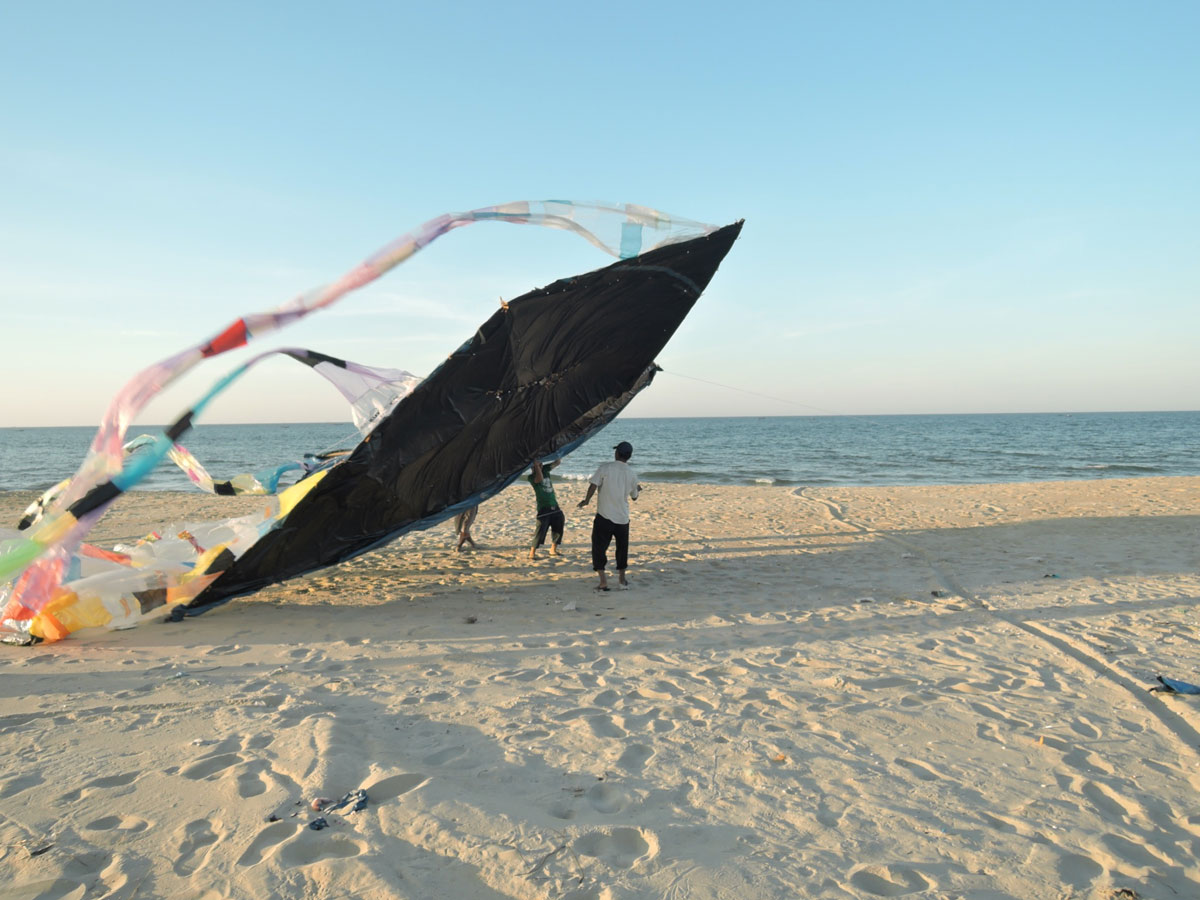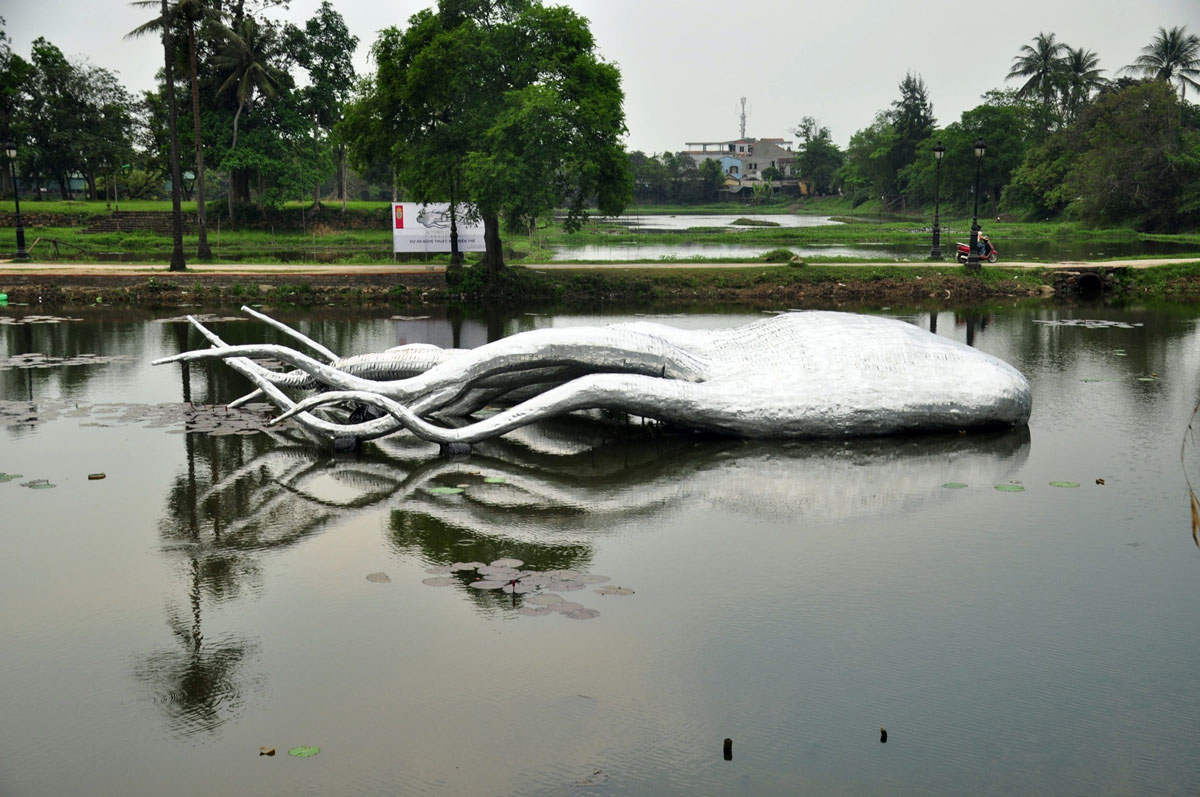Tran Tuan is a visual artist born in 1981. He graduated from Hue Fine Art University in 2006, majored in Traditional Lacquer. In 2010, he especially became more interested in contemporary art and founded Then Café — a space connecting art lovers. His stage name Tuan Then was also formed at that time.
Since then, he has participated in a number of memorable exhibitions such as Nặng Bồng Nhẹ Tếch (Tip The Balance) (2011), Mây Biến Thể (Altered Cloud) (2012), Nấm Hoàng Đế (Emperor Mushroom) (2013) and Bài Học Đầu Tiên (The First Lesson) (2018). His artwork series Forefinger (2013) was submitted to participate in the Singapore Biennale 2013 — the largest exhibition of contemporary art in Southeast Asia. Currently, he is in the process of creating the artwork Sóng Thần (Tsunami).

In 2018, he, along with Then Café and Lang Art Dorm, launched the DASH Project, sponsored by the Danish Culture Development and Exchange Fund (CDEF) and the British Council. The project created a space for creativity, exchanging artistic ideas around social issues, enhancing people’s ability to participate in art activities.
Tuan is practicing multimedia, site-specific, as well as object-based art. For example, outdoor sculptures with unusual shapes such as those of the index fingers or alterations of clouds or mushrooms, have created a correlation between the fictional product and the real world. These works make viewers question social issues, or visualize the dangers that are still happening every day more specifically.
1. In your opinion, is the artist or art separate from everyday life?
For this question, I apologize in advance since it is too difficult to directly give a specific answer. But as a practitioner, I have a number of personal experiences that may be relevant, hopefully these could partly answer this question.
Art reflects the depth of people’s daily lives in general, and artists need the public to be the audience for their work. Daily life needs art as one of the references to perceive reality.
Currently in Vietnam, there are many artists who are working very hard to create “unique” images. With their works, they hope to build a unique identity that will not be confused with anyone. But it cannot be denied that that “unique” image is also representing the aesthetic level, the aesthetic taste of a community that the artist is influenced by, including daily life.

People can prevent the introduction and publication of works of art by interfering with the process of introducing works to the public. For example, some exhibitions or exhibition projects are censored for the purpose of “planning” the number of viewers, and at the same time “planning” content for viewers.
So we can understand that censorship is essentially preventing and selecting viewers from approaching artwork, but one cannot prohibit artists from thinking and creating. Also, censorship only prevents viewers from approaching the work temporarily. Because somehow, artistic practices will find a way to adapt to the nature of censorship.
The phenomenon of breaking through the harsh wall of art censorship of Chinese artists and establishing a respectable place in the world art movements in recent years is a typical example.
2. When is a work considered complete? When is it “enough”?
Artists need to know clearly what they are interested in, which factor they should prioritize, and which theory to use to have an appropriate action plan. There are many times when I have to accept that I need to cancel a work that I cannot complete, and actually that’s “enough”.
There are also cases where I myself act as a spectator to enjoy the beauty of the work made by the community, not by an artist. So even though I do not need to do anything, that is still “enough”.

3. How do you define “art dialogue”?
If one can define what “art” is, then perhaps they can also define what “art dialogue” is.
In my personal opinion, in order to create a dialogue in art, participants need to acknowledge the relativity of theories and respect the “frames of references in art” of others. Each person may have different views, but there is only one truth and it remains unchanged. Relativity opens up many possibilities of describing a problem, but that does not mean that the truth has been abandoned, just that the truth can be stated in different ways of definition.

Furthermore, we cannot have a dialogue without accepting feedback based on the principle of cause and effect. Each individual brings to the dialogue a measure of their own point of view, which is the beginning of a link between the individual and the collective that is taking place in the dialogue.
Naturally, the collective will respond back, and this feedback shows that the connection is being maintained and the dialogue is still going on. Whether the feedback is positive or negative, it always starts from the artist’s own point of view.
Art dialogues in Vietnam often lead to personal conflicts, partly because dialogue participants do not accept feedback.
4. Your works seem to revolve around the gray areas of history. When did this interest of yours arise?
I’m interested in the history of where I was born and raised, or more precisely, I want to see clearly the whole picture of my origin. This is the inspiration for me to find the “gray areas” that have been forgotten or hidden, because of sensitivity or difficulty to say, or for some other reasons that are not recorded.

5. Is there any work you find challenging in the process of creating? Is it because of the sensitive content, or because it forces you to reveal your own dark side, or simply because it is not feasible that it makes you feel pressured?
In a collaborative project with Think Playgrounds to renovate a common yard of a residential area in Hanoi in 2019, I directly met with the residents to get information about the needs and expectations from the project. I was quite shocked because the representative of the residential area only wanted a picture of Uncle Ho and the park benches, no artwork required. So, I decided to withdraw from the project so that someone else who was more suitable with that project could continue the work.
That was not the only time I have encountered this kind of situation. In fact, the community does not always accept a work of art wholeheartedly. Personally, I find art practices in public or community spaces often need to try hard to keep a balance between the aesthetic concept that the artist is pursuing and the general aesthetic taste of the majority.

If not balanced, the project will deviate from the original goal and gradually become a social development project with very few aesthetic elements. Or conversely, the artist’s behavior will somehow force the public to accept “what” they have just made as an “artwork”.
6. How do you describe freedom in art?
Throughout the years of practicing art, I have never been able to fully experience it. It is simply because I am not knowledgeable enough to properly perceive what “freedom” is, does it mean I do not have to ask for permission or report to anyone about my work?
And, is freedom in art similar? I am on my way to figure that out and quite interested in the journey of discovery, maybe even more than the destination.

7. Not only did you create, but also founded a space for artists in Hue to exchange art ideas. What have you gained for your artistic practice by expanding your scope of work like that?
To be honest, I gained a lot. Then Café is one of the bridges connecting local artists with artists outside the geographical limits of Hue city. This is where I meet more friends, both domestic and international artists, who greatly contribute to maintaining my energy to create artwork.
Then Café is also an important experimental space for me to search for an art practice that can adapt to censorship, where the audience has the opportunity to directly interact with the artwork in the most sincere way.

The Factory Contemporary Art Center (The Factory) is the first purpose-built space for contemporary art in Vietnam, operating under the business model of a social enterprise, The Factory focuses on interdisciplinary cultural activities to introduce and expand knowledge of contemporary art in Vietnam.
Address: The Factory Contemporary Art Center, 15 Nguyen U Di, Thao Dien Ward, District 2, Ho Chi Minh City
Contact information: art@factoryartscentre.com | +84 (0)28 3744 2589
Adapted by Thao Van

